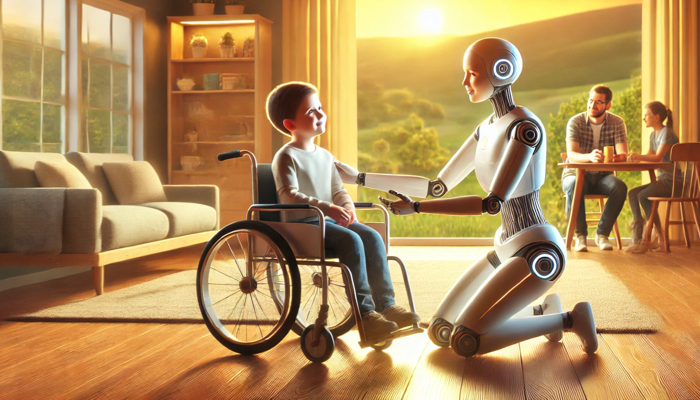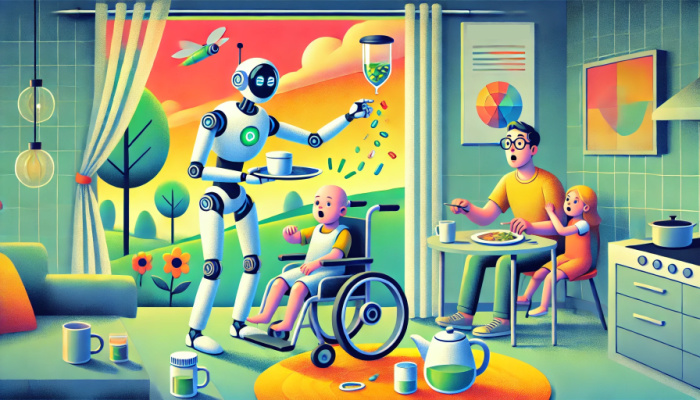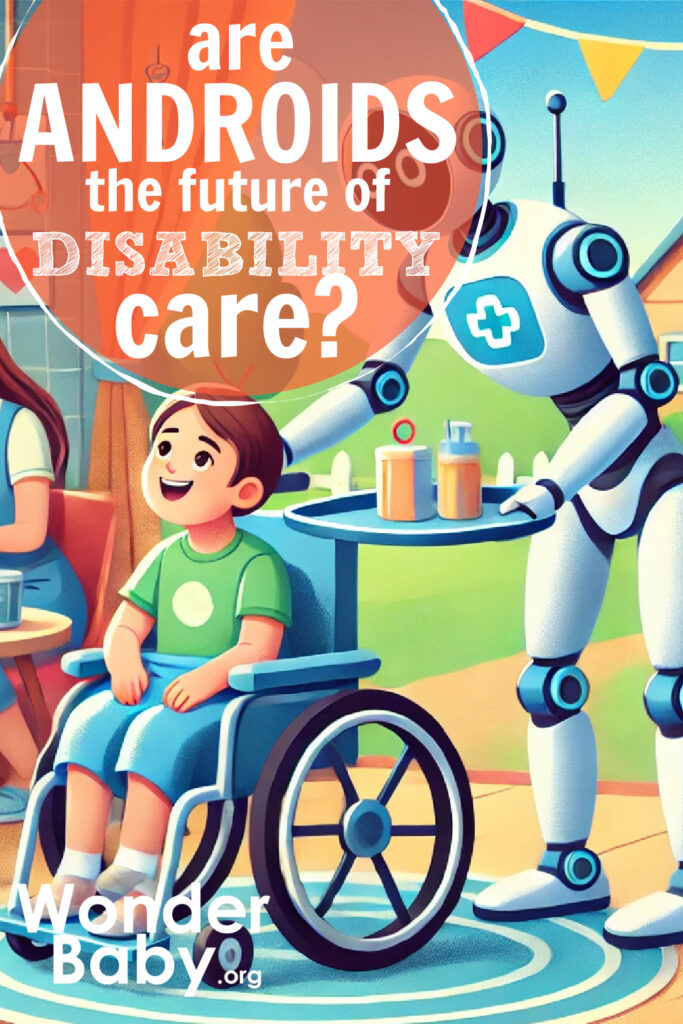Caregivers vs Carebots: Are Androids the Future of Disability Care?

The first personal-use androids are expected to hit the market in 2025, and honestly, it’s about time our vacuum cleaners got an upgrade. These high-tech helpers will start with simple tasks like vacuuming, laundry, and dishwashing, which is already worth celebrating. Thanks to advanced sensors, machine learning, and adaptive algorithms, they’ll be able to navigate your home with impressive efficiency and ease.
But here’s where it gets interesting: These androids are designed to learn new skills, meaning their potential is virtually limitless. At a sky-high price of around $225,000, they’re currently more “luxury car” than “household appliance,” but give it time. Remember when flat-screen TVs were priced like small islands? Now we hang them in every room.
Could androids be the next big thing in disability care? It’s a wild idea, but one worth exploring. Androids are far from affordable for most families, but as with all new tech, costs are likely to drop over time. This advancement raises a tantalizing question: Could androids revolutionize the care of disabled children and adults?
Before we dive in, let’s clarify terminology. An android is a type of robot specifically designed to look and act like a human. While all androids are robots, not all robots are androids. For this discussion, we’ll use “android” to describe humanoid robots with lifelike features that could assist in caregiving.
Why Androids Could Be Game-Changers in Disability Care
Why would you want an android living in your house? Just think of all the ways they could help you!
- A Night’s Sleep for Exhausted Parents: Parenting a child with disabilities often feels like a sleep-deprivation endurance test. Repositioning your child to prevent pressure sores or assisting with bathroom trips can turn even the most comfortable mattress into a mere decoration. Enter android caregivers: these futuristic helpers could take on the night shift, handling routine tasks while you finally get some much needed sleep. For more serious needs, your android could alert you, ensuring you’re only woken when truly necessary.
- Bridging the Nursing Gap: The shortage of nursing staff is a significant hurdle for families. Schools and day programs often require a nurse to handle medical needs like g-tube feedings or trach care, but positions go unfilled due to understaffing and,if we’re being realistic, low pay. Android nurses could fill these roles, enabling children to attend school or receive transportation (with a medical monitor on board) without disruption.
- Lifting Without Breaking a Sweat—or a Back: Caring for a child with mobility challenges involves a lot of lifting, which becomes increasingly difficult as kids grow heavier and parents grow older. Yes, lifting equipment exists, but it’s often the size of a small car, so good luck fitting it into your tiny apartment. Androids, on the other hand, would be compact, versatile, and way better for your back than the “lifting with your knees” technique.
- Unflappable During Behavioral Challenges: Some children with disabilities exhibit challenging behaviors, including hitting or biting. Unlike human caregivers, androids wouldn’t experience fear or frustration, making them ideal for responding calmly and safely. They could also use gentle, controlled strength to subdue a child physically if necessary.
- Hyper-Aware Health Monitoring: Children with disabilities often have complex medical needs and may be nonverbal, making it difficult to detect when something’s wrong. Androids could continuously monitor vitals like oxygen levels and blood pressure, spotting subtle changes that may indicate a medical emergency.
- Abuse-Free Care: A grim reality of human caregiving is the potential for abuse. An android, by design, would not harm or exploit a child. Families could trust that their child’s safety and dignity would remain intact.
- Mess-Free Cleanup: Caregivers often face the glamorous job of managing bodily fluids, from diaper changes to vomit cleanups, and everything in between. But while you’re gagging and holding your breath, an android caregiver would be unfazed. No nausea, no disgust, just efficient cleanup every time.
- A Germ-Free Workforce: Androids wouldn’t call in sick or show up with a mysterious cough right before flu season. No last-minute texts about needing the day off for their cousin’s wedding, either. These futuristic caregivers could follow PPE protocols perfectly, reducing the risk of spreading germs. And they’d never complain about wearing gloves!
- A Solution for Adult Care: When children age out of the school system at 22, families often struggle to find suitable adult programs due to staffing shortages. Androids could supplement or replace staff in group homes and programs, increasing availability and quality of care.
The Dark Side of Relying on Android Care

When you first heard about the possibility of android caregivers, were you excited or maybe a little scared? Let’s be honest, it is kind of creepy. While the promise of android caregivers is exciting, it’s crucial to examine the challenges they present, as well. From financial hurdles to ethical concerns, the adoption of androids in caregiving roles comes with significant considerations that families must weigh carefully.
- The Price Barrier: The current price tag of around $225,000 makes androids unattainable for most families. While costs may decrease over time, accessibility will remain challenging without insurance or government subsidies.
- The Risk of Malfunction: Could an android malfunction and accidentally hurt a child? From dropping a child during a transfer to moving too quickly and causing injury, these risks need thorough consideration. Fail-safes like weight sensors, speed governors, and real-time monitoring systems could help mitigate such dangers, ensuring the android’s actions are precise and safe. It’s worth noting, however, that human caregivers also make mistakes.
- The Human Touch: Androids may excel at tasks, but can they provide the love and emotional connection that human caregivers offer? For many, this is a crucial aspect of care that machines may never replicate. However, the androids in production today promise to have a soft body and muscular system that feels much like a human’s—a stark contrast to the metal robots often depicted in media. While androids may still need to refine their capacity for personal and loving care, their human-like touch could provide a sense of comfort. Additionally, advancements in AI have significantly improved androids’ personalities, making them more capable of empathetic interactions.
- The Ethical Dilemma: Could reliance on androids to care for the disabled population lead to marginalization, where society feels less obligated to engage with and support these individuals? This marginalization could manifest in reduced social interactions and fewer community-driven initiatives to include disabled individuals in broader society. To counteract this, policies could be developed to ensure that androids complement human care rather than replace it entirely. Additionally, fostering public awareness and encouraging community involvement would help maintain the human connection essential for a compassionate society.
- Job Displacement: If androids become commonplace, human caregivers and nurses might face job losses. Balancing technological progress with workforce stability will be key.
- The Sci-Fi Fear Factor: From The Terminator to The Matrix, Hollywood has been very clear: robots will rise up, and it will not end well for humanity. While this doomsday scenario is probably unlikely (I hope so anyway!), the thought of an android harming its human family is enough to give anyone pause. But hey, at least we’ll get a good story out of it!
The idea of androids in disability care might sound like something straight out of a sci-fi movie, but here we are, standing on the brink of a robot revolution with our fingers crossed that it’s not the scary Terminator kind. Sure, the thought of a sleek android folding your laundry while monitoring your child’s vitals feels like the ultimate life hack, but there’s plenty to consider before rolling out the red carpet for your robotic helper.
From weighing their hefty price tag to imagining them doing the messy, unglamorous parts of caregiving, androids promise a future that’s equal parts exciting and slightly weird. So, are androids our future caregivers? Maybe.
Perhaps the question isn’t whether androids will become part of disability care but how we can thoughtfully and responsibly integrate them into our lives. For now, we’ll have to keep an eye on the technological advances and be prepared to make consequential decisions in the (possibly very near) future.

Related Posts

Eye Conditions and Syndromes, Visual Impairment
Neuralink Announces Plans to Restore Sight to the Blind with Brain Chip
Elon Musk’s company Neuralink has announced plans to begin human trials of its new “Blindsight” brain chip by the end of 2025.

Special Needs
5 Spring Cleaning Tips for Families of Children with Disabilities
Spring cleaning is an opportunity to create a more accessible, organized, and supportive space for your child with disabilities. Declutter, deep clean, and refresh!

Visual Impairment
The Gift of Understanding: How a Young Child Helps His Blind Father Navigate Life
When a parent is blind, it’s natural for people to wonder how their sighted child will adapt. Will they struggle to understand their parent’s needs? Will they feel burdened by...